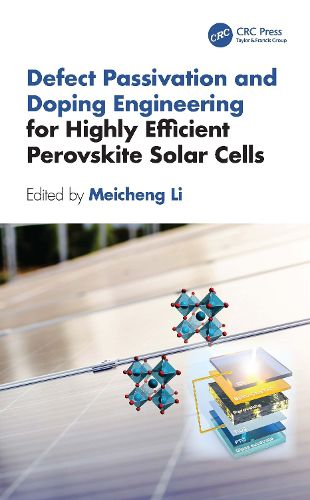Readings Newsletter
Become a Readings Member to make your shopping experience even easier.
Sign in or sign up for free!
You’re not far away from qualifying for FREE standard shipping within Australia
You’ve qualified for FREE standard shipping within Australia
The cart is loading…






Perovskite solar cells (PSCs) have attracted increasing interest from researchers due to their superb power conversion efficiencies. The intrinsic trap defects, unavoidably formed in the fabrication process, can induce nonradiative recombination, ion migration, I-V hysteresis, and instability of PSCs. However, trap defects are not always harmful. Fully understanding the fundamentals of trap defects as well as the passivation and doping strategies is helpful for further improving device efficiency and stability. This book summarizes the methods and strategies of defect passivation and material doping aiming to clearly describe the underlying mechanisms for high-efficiency and stable PSCs.
Introduces the fundamental characteristics of perovskite material defects
Discusses the main strategies, principles, and applications of defect passivation
Describes defect passivation consequences and characterization methods
Covers principles, methods, and applications of doping engineering in perovskites
Explores the structural design, advantages, characteristics, fabrication methods, and future development of perovskite homojunction
Engineers and researchers working with photovoltaic generation, solar cells, semiconductors, and related topics will find this book to be an invaluable resource.
$9.00 standard shipping within Australia
FREE standard shipping within Australia for orders over $100.00
Express & International shipping calculated at checkout
Perovskite solar cells (PSCs) have attracted increasing interest from researchers due to their superb power conversion efficiencies. The intrinsic trap defects, unavoidably formed in the fabrication process, can induce nonradiative recombination, ion migration, I-V hysteresis, and instability of PSCs. However, trap defects are not always harmful. Fully understanding the fundamentals of trap defects as well as the passivation and doping strategies is helpful for further improving device efficiency and stability. This book summarizes the methods and strategies of defect passivation and material doping aiming to clearly describe the underlying mechanisms for high-efficiency and stable PSCs.
Introduces the fundamental characteristics of perovskite material defects
Discusses the main strategies, principles, and applications of defect passivation
Describes defect passivation consequences and characterization methods
Covers principles, methods, and applications of doping engineering in perovskites
Explores the structural design, advantages, characteristics, fabrication methods, and future development of perovskite homojunction
Engineers and researchers working with photovoltaic generation, solar cells, semiconductors, and related topics will find this book to be an invaluable resource.